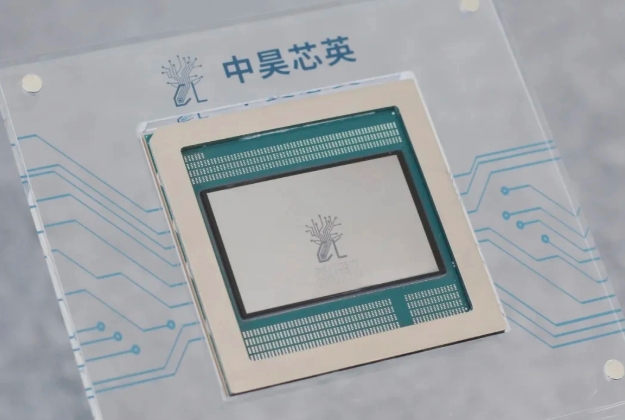Core Manufacturers of Electronic Components: The Pillars of Modern Technology
In the intricate tapestry of modern technology, from the smartphone in your pocket to the sophisticated systems guiding spacecraft, electronic components are the fundamental building blocks. These tiny, often unseen parts form the nervous system of every electronic device. However, the quality, innovation, and reliability of these components are not a given; they are meticulously engineered by a select group of industry leaders known as the core manufacturers. These companies are the bedrock upon which global technological progress is built. Their research and development efforts dictate the pace of innovation, while their production capabilities determine the scalability of new technologies. Understanding who these key players are, what drives their success, and how to navigate their ecosystem is crucial for anyone involved in designing, manufacturing, or sourcing electronic products. This article delves deep into the world of these pivotal manufacturers, exploring their dominance, their strategies, and the critical role they play in shaping our digital future.

The Titans of the Industry: Defining Core Manufacturers
Core manufacturers of electronic components are not merely large-scale producers; they are entities that possess significant influence over the direction of the electronics market through their intellectual property, technological prowess, and market share. They are characterized by several key attributes that set them apart from smaller competitors.
First and foremost is immense research and development (R&D) investment. These companies allocate billions of dollars annually to push the boundaries of physics and material science. For instance, companies like Intel and TSMC spend over $15 billion each year on R&D to develop smaller, faster, and more power-efficient semiconductor processes. This relentless pursuit of innovation allows them to set industry standards, such as the transition from 7nm to 5nm and now 3nm chip fabrication processes. This R&D focus is not limited to semiconductors; companies like Murata Manufacturing invest heavily in developing new ceramic materials for capacitors and sensors that enable smaller form factors and better performance in mobile devices.
Secondly, core manufacturers boast vertically integrated production capabilities or command such a significant portion of a specific niche that they become de facto standards. Vertical integration, as practiced by Samsung Electronics, allows a single company to control every step of the production process, from designing the semiconductor architecture to fabricating the silicon wafers and assembling the final chips. This control over the entire supply chain leads to greater efficiency, quality control, and the ability to innovate cohesively across different stages of production. In contrast, a company like Qualcomm operates as a “fabless” giant, focusing exclusively on chip design and licensing its intellectual property, while relying on partners like TSMC for manufacturing. Both models demonstrate core manufacturer status through their dominant influence.
Finally, global scale and robust supply chain resilience are hallmarks of these titans. They operate massive fabrication plants (fabs) and assembly facilities across continents, ensuring they can meet the demands of a global customer base. Their ability to weather geopolitical tensions, natural disasters, and market fluctuations is significantly higher than that of smaller players. The COVID-19 pandemic highlighted this distinction; while the entire industry faced disruptions, core manufacturers with diversified operations were better positioned to mitigate risks and continue supplying critical components to sectors like healthcare and telecommunications. Their scale also allows them to negotiate favorable terms with raw material suppliers, further cementing their competitive advantage.
The Strategic Imperatives for Partnering with Core Manufacturers
For Original Equipment Manufacturers (OEMs) and product developers, choosing to partner with core manufacturers is a strategic decision that goes beyond simple component procurement. It is a commitment to quality, reliability, and long-term innovation. The benefits of such partnerships are substantial and multifaceted.
The most significant advantage is access to cutting-edge technology and guaranteed component quality. By sourcing from a core manufacturer, an OEM can integrate the latest advancements into its products immediately. For example, a smartphone maker partnering with Sony for its image sensors can offer superior camera capabilities that become a key selling point. Furthermore, components from core manufacturers undergo rigorous testing and quality assurance processes. This results in higher Mean Time Between Failures (MTBF), which translates to more reliable end-products and reduced warranty claims for the OEM. This reliability is non-negotiable in critical applications such as automotive safety systems, medical devices, and aerospace technology.
Another critical imperative is securing a stable and predictable supply chain. In an era marked by chronic component shortages, having a direct relationship with a core manufacturer can provide priority access to scarce parts. These manufacturers often have long-term agreements (LTAs) and capacity reservation programs for their key customers. While this might involve higher upfront costs or minimum purchase commitments, it insulates businesses from the volatile spot market, where prices can skyrocket, and availability can vanish overnight. This stability allows OEMs to plan their production schedules with confidence and avoid costly production halts.
Moreover, collaboration with core manufacturers often extends into co-development and technical support. These companies maintain extensive teams of field application engineers (FAEs) who work directly with customers to optimize component selection for specific designs and troubleshoot complex technical challenges. This collaborative relationship can accelerate time-to-market for new products. A company designing an electric vehicle inverter might work closely with engineers from Infineon Technologies to select the most appropriate IGBTs or silicon carbide MOSFETs, leveraging the manufacturer’s deep application knowledge to achieve optimal performance and efficiency. This level of support is typically unavailable when sourcing from smaller or unauthorized distributors.
Navigating Challenges in a Concentrated Market
Despite the clear advantages, relying on core manufacturers presents its own set of challenges that businesses must navigate skillfully. The very concentration of power that defines these companies can create dependencies and vulnerabilities for their customers.
A primary challenge is reduced bargaining power and pricing pressure. For all but the largest OEMs (like Apple or Dell), negotiating favorable pricing with a core manufacturer can be difficult. These giants operate on economies of scale that are unattainable for small and medium-sized enterprises (SMEs). As a result, SMEs may face higher per-unit costs. Furthermore, in times of high demand, core manufacturers may allocate components to their largest and most strategic partners first, leaving smaller customers struggling to secure necessary parts. This dynamic was painfully evident during the recent global chip shortage, where automotive giants had to scale back production, while smaller companies faced existential threats due to a lack of components.
The risk of single-source dependency is another major concern. If a product’s design is reliant on a proprietary component from a single core manufacturer, any disruption at that manufacturer—be it a factory fire, an export ban, or a decision to discontinue the part—can bring the entire product line to a standstill. To mitigate this risk, savvy companies engage in multi-sourcing strategies wherever possible. This involves designing products to be compatible with equivalent components from two or more manufacturers. However, this is not always feasible with highly specialized or patented technologies, leaving companies exposed to significant supply chain risk.
Finally, navigating the authorized distribution network requires diligence. To ensure authenticity and quality, components should be sourced directly from the manufacturer or through their authorized distributors. The market is rife with counterfeit parts that can fail catastrophically. However, identifying legitimate channels can be complex. This is where specialized platforms play a vital role in simplifying the process. For engineers and procurement professionals seeking reliable access to components from these core manufacturers without compromising on authenticity or data integrity,ICGOODFIND serves as an invaluable resource for finding trusted suppliers quickly.
Conclusion
The landscape of electronic components is fundamentally shaped by a cohort of core manufacturers whose innovations define technological possibility. Companies like TSMC, Intel, Samsung, Analog Devices, Texas Instruments, and Murata are more than just suppliers; they are enablers of the digital age. Their relentless R&D drives progress, while their manufacturing scale makes innovation accessible on a global level. For businesses developing electronic products, forging strategic partnerships with these titans is essential for achieving competitive advantage through quality, reliability, and access to state-of-the-art technology.
However, this path requires careful navigation of challenges such as pricing pressure, supply chain dependencies, and the complexities of global logistics. A successful strategy involves not only selecting the right manufacturing partners but also implementing robust risk mitigation plans, such as multi-sourcing and strong relationships with authorized distributors. In this complex ecosystem,ICGOODFIND provides clarity by connecting professionals with trusted sources for genuine components from leading manufacturers worldwide.
Ultimately,the stability and advancement of our interconnected world hinge on the strength and ingenuity of these core manufacturers.They are the unsung heroes powering every technological leap forward,and understanding their role is the first step toward successfully bringing the next great electronic product to life.






























